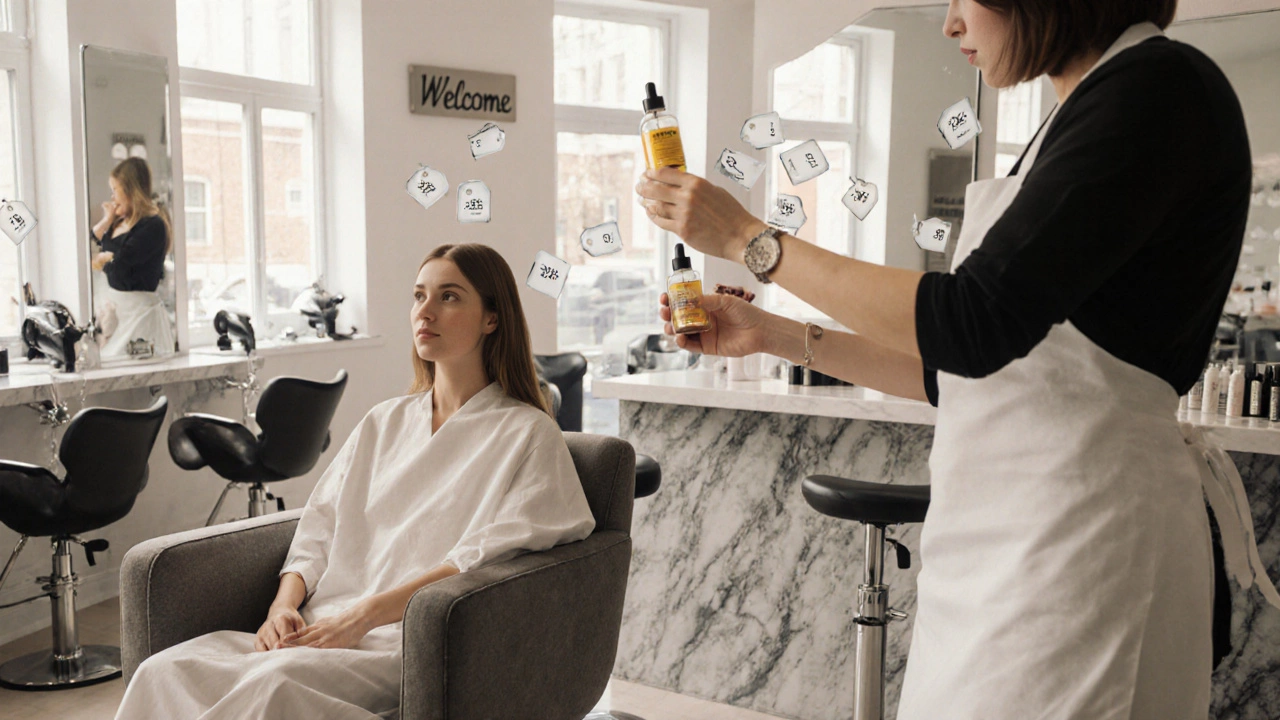Beauty Salon Pre-Checklist Tool
Pre-Booking Safety Checklist
Verify these essential items before booking your next salon appointment to avoid common disadvantages:
Your Pre-Booking Assessment
Complete the checklist to see your assessment
Thinking about booking a session at a beauty salon is a quick way to get a fresh look, but every shiny surface hides a few rough edges. Below is a no‑fluff rundown of the most common beauty salon disadvantages you should weigh before signing the consent form.
Hidden Costs that Sneak In
Most salons quote a base price for a haircut or a facial, then add extras like premium shampoos, specialty serums, or "express" services. In Brighton, a standard haircut can start at £25, but add a scalp massage and you’re looking at £35‑£40. Those add‑ons are often presented as upgrades rather than optional extras, making the final bill higher than the initial estimate.
Health and Safety Risks
Improper sanitation can turn a relaxing treatment into a health hazard. Instruments that aren’t sterilised between clients may spread skin infection or trigger an allergic reaction. According to the UK Health and Safety Executive, 12 % of salon‑related complaints in 2023 involved bacterial or fungal infections, often linked to reusable tools that weren’t autoclaved.
Skill and Training Gaps
Not every stylist holds a level‑3 licensed cosmetologist qualification. Some rely on short‑course certifications that may not cover advanced techniques like colour correcting or corrective haircuts. When a stylist lacks proper training, the result can be uneven layers, over‑processed hair, or a facial that leaves the skin irritated due to excessive chemicals.
Privacy and Personal Data Issues
Modern salons use digital booking systems that store client contact details, medical histories (e.g., allergies), and payment info. If the software isn’t GDPR‑compliant, data could be sold to third‑party marketers or become a target for cyber‑theft. A 2024 survey of UK salons showed that 8 % had experienced a data breach in the past two years, often due to outdated encryption.

Scheduling Headaches and Wait Times
Popular salons in city centres run on tight slots. A short‑notice cancellation can leave you waiting for an hour while the stylist tries to rearrange the day’s agenda. In addition, over‑booking to maximise revenue means you might be rushed through a treatment, compromising quality.
Limited Personalization
Many salons offer set packages that assume a one‑size‑fits‑all approach. A “standard facial” might include a mask, exfoliation, and massage, but if you have oily skin you’d benefit from a different serum. Without a thorough consultation, you may walk out with a treatment that doesn’t address your specific concerns.
How to Mitigate the Drawbacks
Knowing the pitfalls lets you take proactive steps:
- Ask for a detailed price breakdown before any service.
- Check that tools are autoclaved or disposable; look for visible sanitisation logs.
- Verify the stylist’s qualifications-ask to see their level‑3 certification or a portfolio of recent work.
- Read the salon’s privacy policy; ensure they state GDPR compliance and data encryption.
- Book at least 48 hours in advance to reduce the risk of over‑booking delays.
- Request a customised consultation, especially for skin‑related services.
Common Disadvantages at a Glance
| Disadvantage | Typical Impact | Mitigation |
|---|---|---|
| Hidden costs | Bill higher than quoted | Ask for full price list up front |
| Inadequate hygiene | Skin infection, allergic reaction | Observe tool sterilisation; ask about cleaning protocols |
| Unqualified staff | Poor results, hair damage | Verify licences, request before‑and‑after photos |
| Data privacy lapses | Identity theft, spam | Read privacy policy; prefer salons with encrypted booking systems |
| Scheduling chaos | Long wait times, rushed service | Book early; confirm appointment 24 h prior |
| One‑size‑fits‑all packages | Ineffective treatment | Insist on a tailored consultation |
Quick Checklist Before You Book
- Review the salon’s price menu online.
- Look for visible hygiene certificates or ask about sterilisation.
- Confirm the stylist holds a level‑3 cosmetology licence.
- Read the data‑privacy statement; check for GDPR mention.
- Schedule at least two days ahead and get a confirmation email.
- Ask for a brief pre‑service consultation tailored to your skin/hair type.
Frequently Asked Questions
Are beauty salons regulated in the UK?
Yes. Salons must comply with the Health and Safety at Work Act and, if they offer certain treatments like laser hair removal, they fall under the Cosmetic Products Regulation. However, enforcement varies, so checking individual salon credentials is still essential.
How can I tell if a stylist is properly licensed?
Ask to see their level‑3 or higher certification. Most reputable salons display a licence board in the reception area or have it available on request. You can also verify the name through the UK’s Register of Cosmetology Professionals.
What are the signs of poor hygiene in a salon?
Look for cracked or stained towels, a lack of visible cleaning schedules, and tools that appear reused without sterilisation. Reputable salons often have a glass case showing autoclave cycles or disposable spatulas for each client.
Can I negotiate the price if I’m unhappy with a treatment?
Most salons have a satisfaction guarantee policy. If the result is far from what was promised, ask to speak with the manager and request a partial refund or a complimentary corrective session.
Is it safe to share my medical history with a beauty salon?
Only share relevant details (e.g., skin allergies, recent surgeries) that affect the treatment. Ensure the salon records the information securely and deletes it after a reasonable retention period, as required by GDPR.
By keeping these drawbacks in mind and taking a few precautionary steps, you can enjoy the pampering experience without the unpleasant surprises. After all, a good salon should enhance your confidence, not cause headaches.

